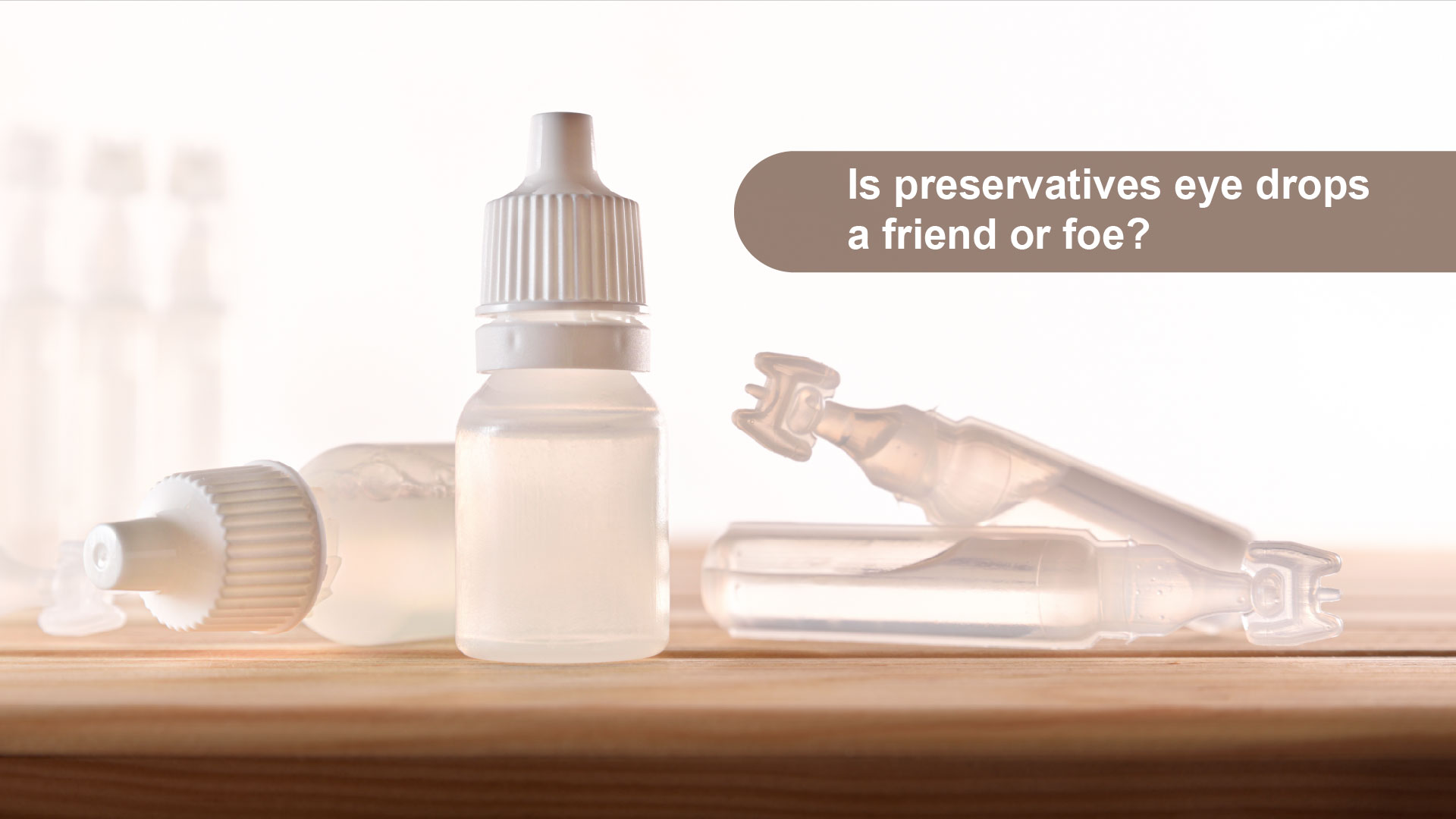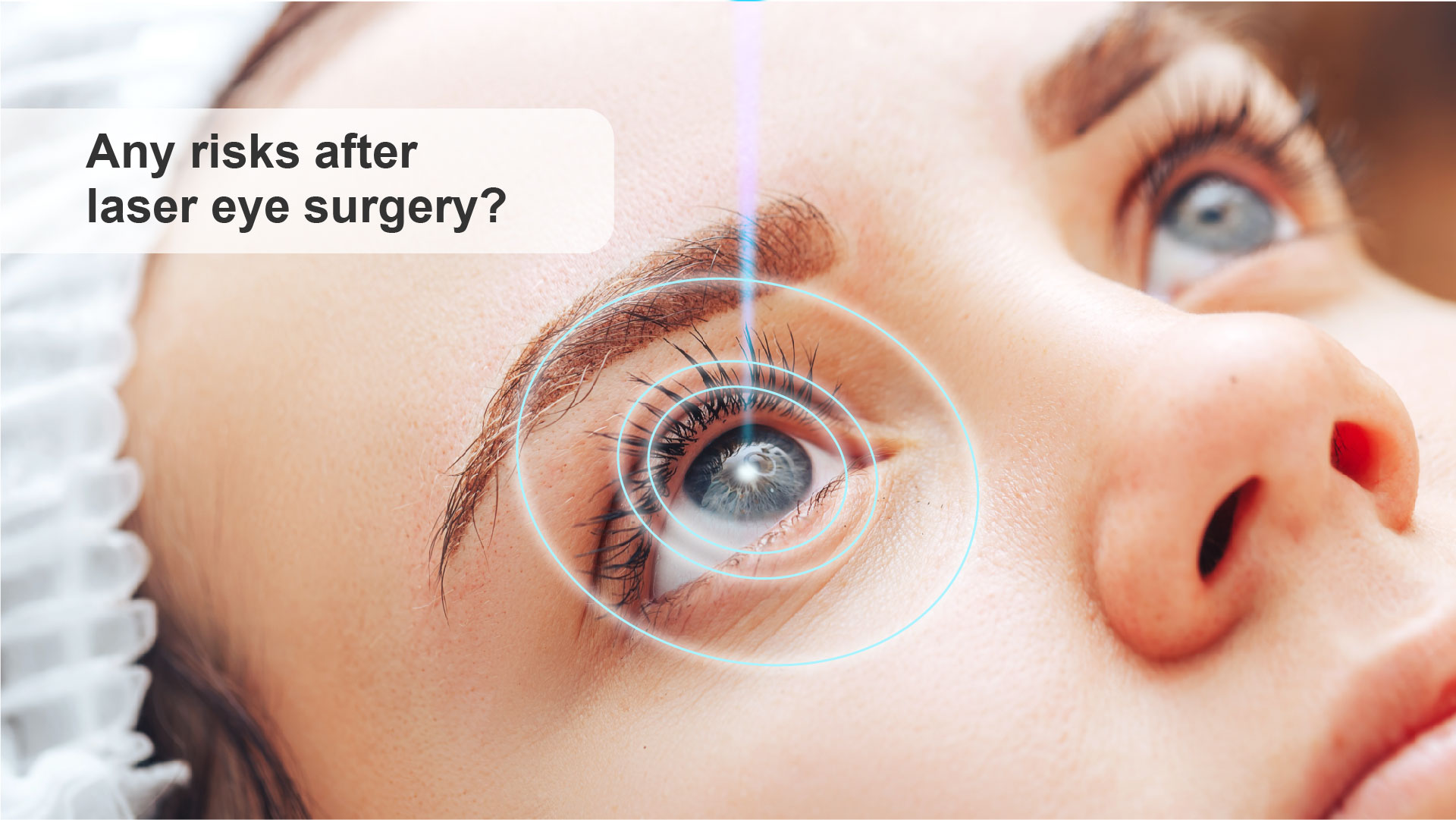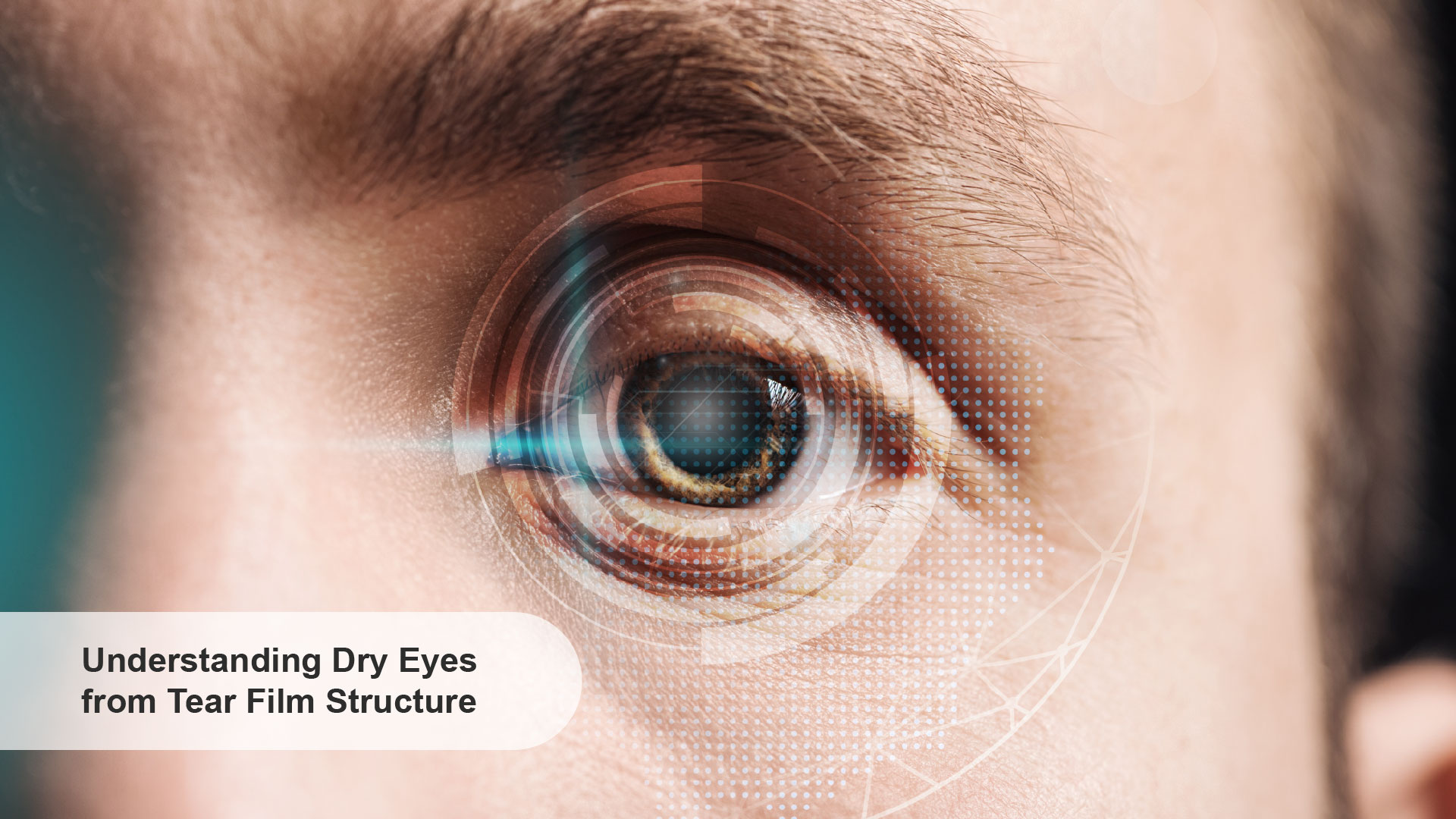>Why Are Preservatives Required in Eye Drops?
Almost all eye drops or artificial tears contain preservatives. Preservatives provide essential antimicrobial activity, which is crucial for maintaining the sterility of local ophthalmic medications and extending their shelf life. Since the 1970s, many regulatory agencies, including the U.S. Food and Drug Administration (US FDA), the United States Pharmacopeia (USP), and the European Pharmacopoeia (EP), have required the use of preservatives in multi-dose eye drop formulations. Generally, preservatives can be divided into two main categories: Detergents or Oxidizing Agents. Many molecules possess antimicrobial activity and have been incorporated into prescription and non-prescription topical ophthalmic medications.
Is it wrong to use preservative-free eye drops every day?
Long-term use of eye drops containing preservatives can be toxic to surface eye cells (including corneal epithelium and conjunctiva), which may lead to corneal epithelial cell death, corneal punctate ulcers, delayed corneal wound healing, conjunctival inflammation/conjunctival fibrosis, tear film instability, dry eye symptoms, allergic reactions, eye discomfort, etc. The higher the concentration of preservatives, the more pronounced these side effects may be.
Preservatives have a significant adverse impact on the ocular surface. Short-term use of eye drops containing preservatives may not have a substantial effect on both eyes, but especially in cases of chronic, long-term use, such as patients with glaucoma who may require multiple eye drops and frequent instillation, or patients with pre-existing ocular surface diseases who need continuous medication to control the condition, long-term health problems may arise. Long-term use of such eye drops can disrupt the lipid layer and mucosal layer cells of the tear film, accelerate tear loss, cause dry eyes and other discomfort, and even make the ocular surface prone to scarring.
Types and Side Effects of Preservatives in Eye Drops

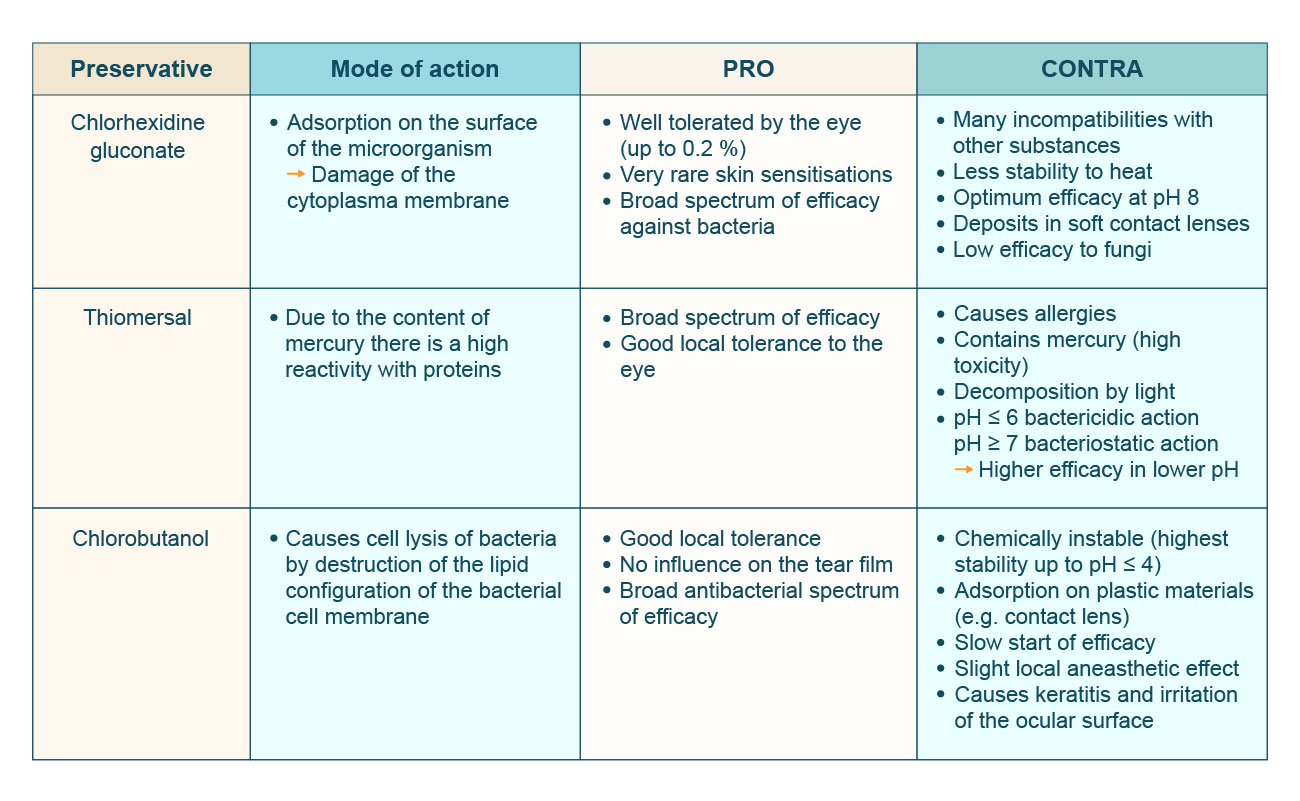
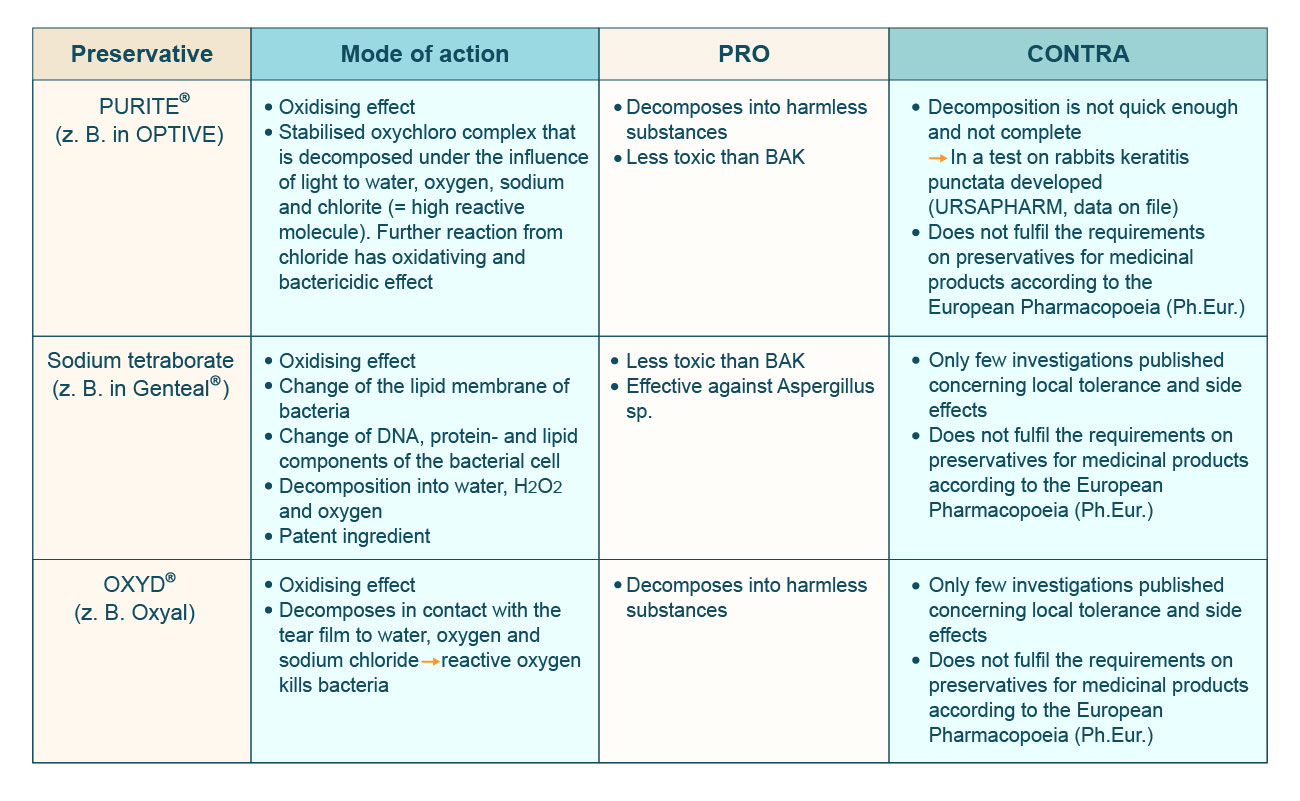
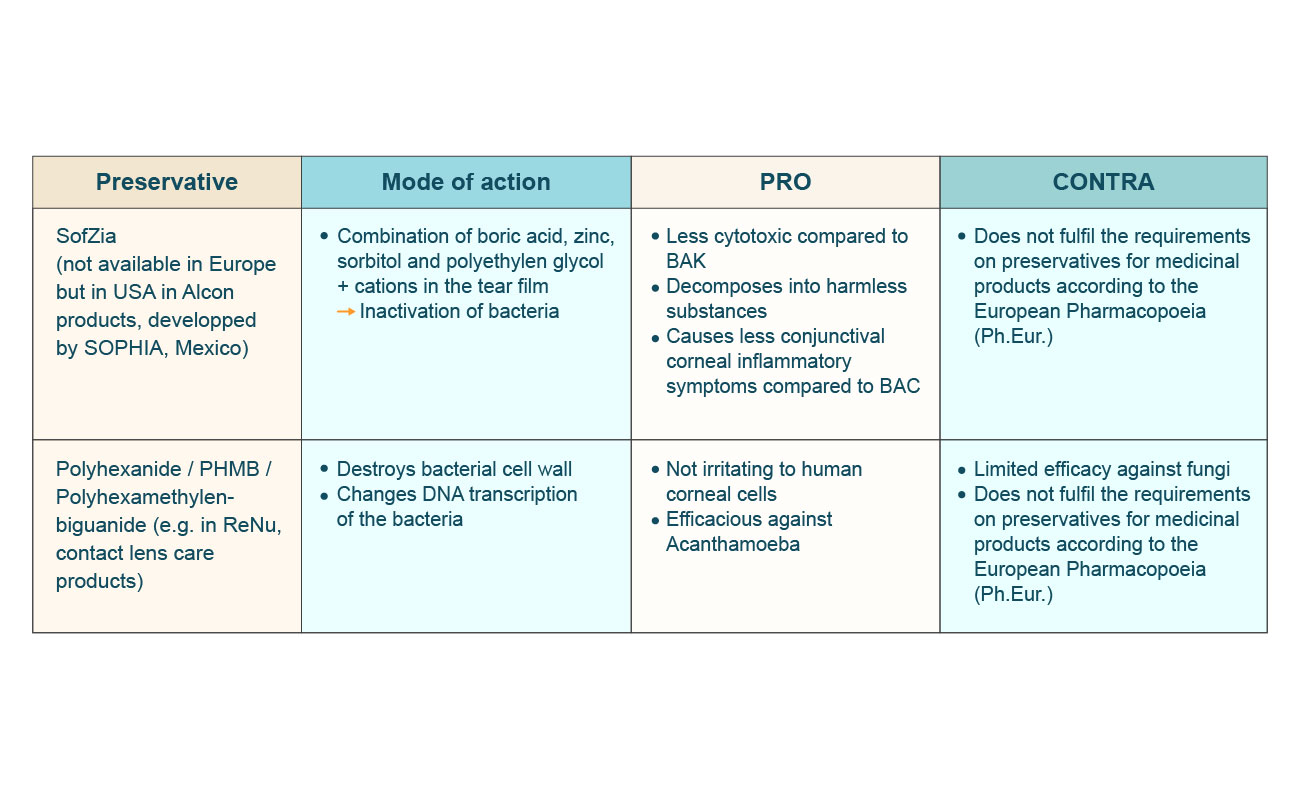
Why Are Phosphate-Free Eye Drops Recommended After Ophthalmic Surgery?
Dry eye syndrome may result from an imbalance between the secretion and evaporation of tears caused by various factors such as aging, environmental stressors (e.g., UV light, weather), wearing contact lenses, medications, etc. Many patients undergoing ophthalmic surgery, including refractive surgery (such as LASIK or SMILE), cataract surgery, and corneal transplant surgery, may also experience dry eye syndrome, characterized mainly by itching, foreign body sensation, burning, dryness, etc. Artificial tears are recommended as the first-line treatment to alleviate these symptoms of dry eye syndrome.
Phosphates commonly found in eye drops have long been used as buffering agents, which are used to maintain the proper pH of eye drops and prevent ingredient degradation. Phosphates also naturally exist in the human eye, but excessive phosphates from eye drops may lead to adverse effects. For patients undergoing ophthalmic surgery, phosphates may be a significant concern, although the risk of adverse effects is low.
Ophthalmic surgery damages the surface of the cornea, leading to an increase in calcium ion levels. Additional phosphates in eye drops can combine with calcium ions to form low-solubility calcium phosphate crystals. Prolonged use of eye drops containing phosphates may lead to the deposition of these crystals. The consequences may be irreversible and, in severe cases, may lead to vision loss.
Phosphate-Free Buffered Solutions
Buffered solutions play a significant role in maintaining the proper pH of artificial tears. Therefore, manufacturers must carefully select the best buffering agents to ensure patient safety and efficacy. Two common buffering agents used as alternatives to phosphate buffers are citrate or borate buffers.
Benefits of Citrate Buffered Solutions
- Do not induce calcification on the ocular surface
- Highly tolerable
- Have corneal healing properties
Unlike phosphate buffers, citrate buffers can help heal wounds on the ocular surface, making them suitable for patients in recovery. Overall, citrate buffers are an excellent alternative to phosphate buffers.
Similarly, borate buffers are another popular substitute for phosphate buffers. Borate buffers do not form calcification deposits on the ocular surface, have high tolerance, and possess antimicrobial activity. Therefore, they are often included in eye drops to avoid the use of phosphate buffers.
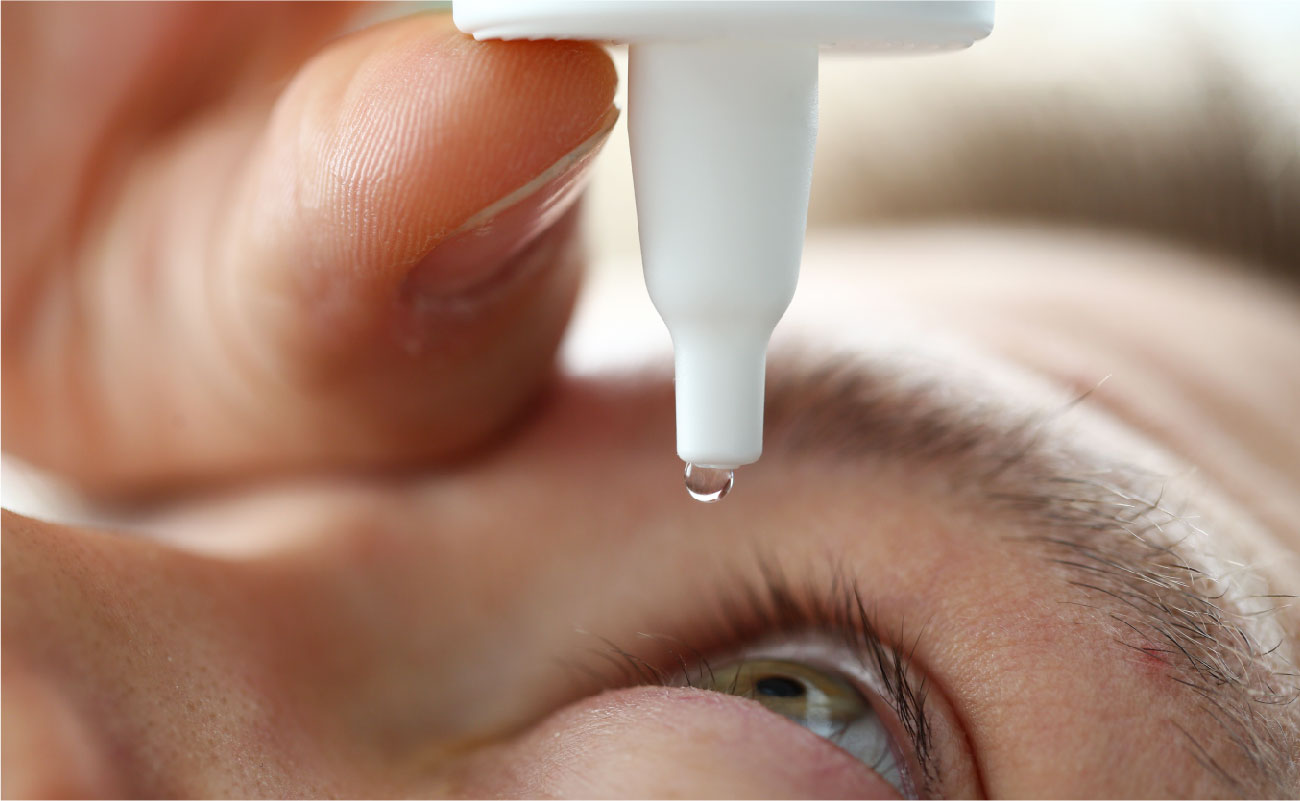
How do we avoid the hidden danger of preservative eye drops?
Various eye drops are on the market, and patients should consider the ingredients and efficacy. Below is a recommendation for Ursapharm Hylo® Series as a daily moisturizer to alleviate tear film dysfunction:
- Preservative-free and patented bottle design: Using the COMOD®-System patented technology, the eye drops are kept in a sterile state and sealed environment without the need for preservatives, maintaining the quality of the eye drops.
- Patented Hylo® hyaluronic acid: It is a hydrophilic molecule that can adsorb in water, forming a protective film on the eye’s surface. This helps maintain moisture and hydration and improves the tear film’s stability, helping protect the eyes.
- Drop-by-drop dosage Design: The COMOD® dosage system makes dispensing precisely one drop per pump stroke possible. This means the contents go a long way. The drop dispensed is the same size, producing a constant, reliable effect.

